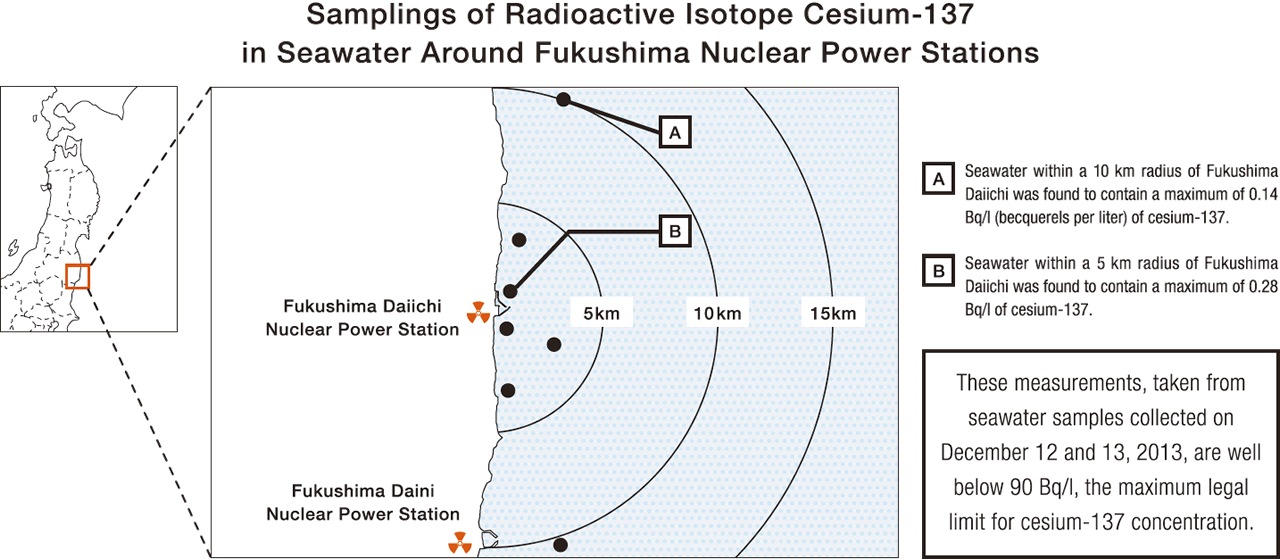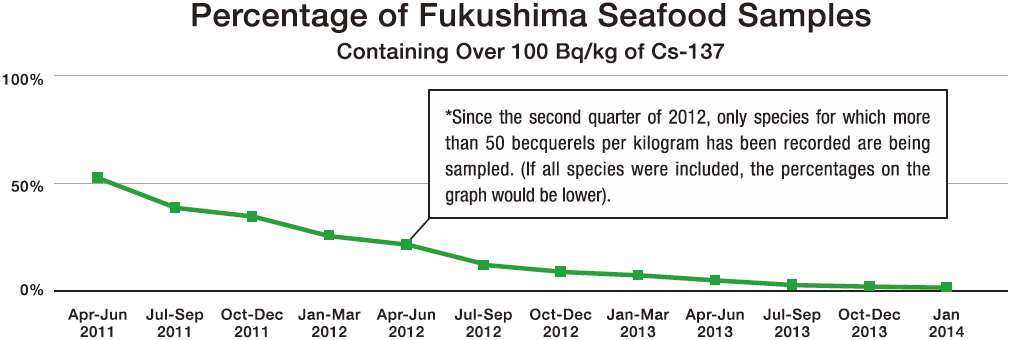Three years have passed since the accident at the Fukushima Daiichi Nuclear Power Station caused by the Great East Japan Earthquake. Speaking before the International Olympic Committee on September 7, 2013, Prime Minister Shinzo Abe referred to the aftermath of this accident, declaring: “Some may have concerns about Fukushima. Let me assure you that the situation is under control. It has not done and never will do any damage to Tokyo.
”From November 25 to December 4, 2013, an expert team from the International Atomic Energy Agency (IAEA) conducted a review of Japan’s plans for decommissioning the power station. Upon completing there view, Juan Carlos Lentijo, the team leader and IAEA Director of the Division of Nuclear Fuel Cycle and Waste Technology, stated, “Japan has established a good foundation to improve its strategy and to allocate the necessary resources to conduct the safe decommissioning of Fukushima Daiichi.” And at a press conference at the Foreign Press Center, Japan (FPCJ) on December 4, he noted, “What we have seen is that the contamination is contained in the main buildings of the plant and inside the port associated to the site.But there are still some risks of leakage to the environment, and for this reason, they have adopted a set of countermeasures to prevent and correct this potential risk.”
With regard to dealing with the contaminated water from the station, the policy of the Japanese government is based on three principles: 1) removing the source of the contamination, 2) isolating water from the contamination source, and 3) preventing leakage of the contaminated water. In line with this policy, work is in progress on immediate countermeasures, such as the removal of highly contaminated water from the trenches and the pumping out of groundwater, and on fundamental countermeasures, including installation of impermeable walls to prevent leakage of water into the sea and leakage of groundwater into the buildings. Decisions have also been reached on additional preventive and multilayered measures, such as accelerated installation of welded-joint tanks, further measures to restrain the inflow of groundwater, and installation of the Multi-nuclide Removal System (known as ALPS).
How much contaminated water leakage is there? According to a report compiled by the Committee on Countermeasures for Contaminated Water Treatment in December 2013, analysis indicates that groundwater is flowing into the land under the buildings at Fukushima Daiichi (Units 1–4 and processing buildings) at a rate of approximately 800 cubic meters per day, of which approximately 400 cubic meters enters the buildings. Since the groundwater that has entered the buildings is pumped out as required, it does not flow out to the sea but is stored and processed in tanks for contaminated water. The committee’s analysis indicates that the remaining 400 cubic meters of groundwater is not entering the buildings but is flowing out to sea. This water is flowing to the sea through land that was contaminated from leakage at the time of the accident, and so it is believed that some of what is flowing into the sea is contaminated.
At present, the contaminated water is of many types, including highly contaminated water in the buildings and trenches, contaminated water that has been pumped out and is being stored in tanks pending completion of its processing, and tritium water (containing a radioactive isotope of hydrogen) that has been put through the ALPS. The key point is speedy processing of the contaminated water; this is now being implemented using ALPS equipment, which has a processing capacity of 750 cubic meters a day.
Preventive and Multilayered Measures and Monitoring of the Environmental Impacts
The government is not leaving handling of the situation up to Tokyo Electric Power Company (TEPCO), which owns Fukushima Daiichi; it has moved to the forefront and is taking steps, including the formulation of basic policy and an action plan for decommissioning and contaminated water countermeasures, fiscal provisions for technologically difficult measures, and considering, formulating, and following up on “preventive and multilayered” measures. The IAEA’s expert team offered a positive assessment of these steps.
Meanwhile, the government has been monitoring radiation levels in seawater and elsewhere in the environment constantly for more than two years under the Comprehensive Radiation Monitoring Plan. As of the end of July 2013, there were no longer major fluctuations in the monitoring results, but the government is also enhancing its seawater monitoring in line with the points raised by the IAEA.
In addition, the Fisheries Agency continues to conduct sampling tests of marine products about once a week at Fukushima Prefecture’s major ports. The share of sampled products with radiation exceeding safety standards, which was 53% as of April–June 2011, has fallen substantially, to 1.9% as of October–December 2013. The Japanese government publishes new information on the nuclear power facilities and contaminated water as it becomes available from its ministries and agencies on the websites described below.
Click for More Information About Contaminated Water Leakage
● Prime Minister of Japanand His Cabinet : http://japan.kantei.go.jp/ongoingtopics/waterissues.html
● Ministry of Economy,Trade and Industry :
http://www.meti.go.jp/english/earthquake/nuclear/decommissioning/index.html#cw
● Nuclear Regulation Authority : http://www.nsr.go.jp/english/
● Fisheries Agency : http://www.jfa.maff.go.jp/e/index.html
● International Atomic Energy Agency Report : http://www.meti.go.jp/english/press/2014/0213_02.html
































































































































